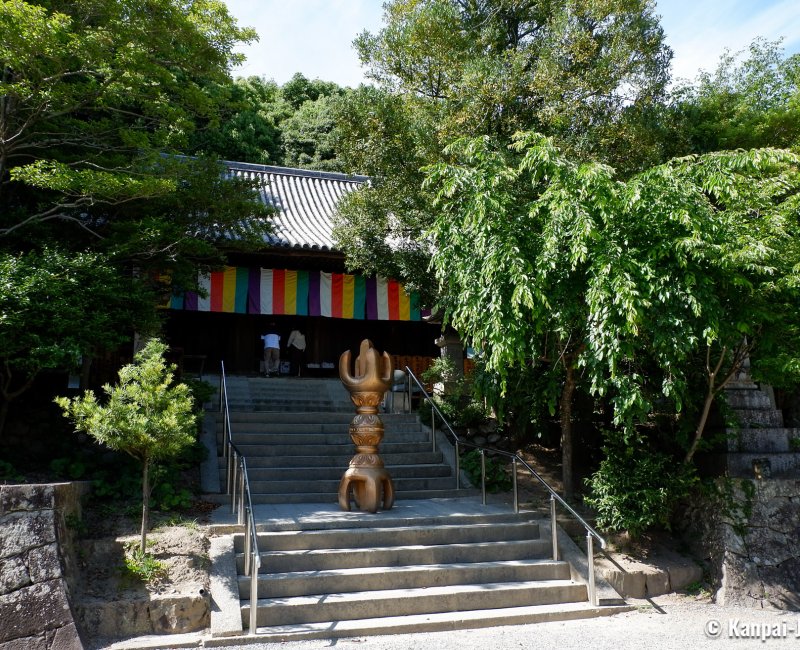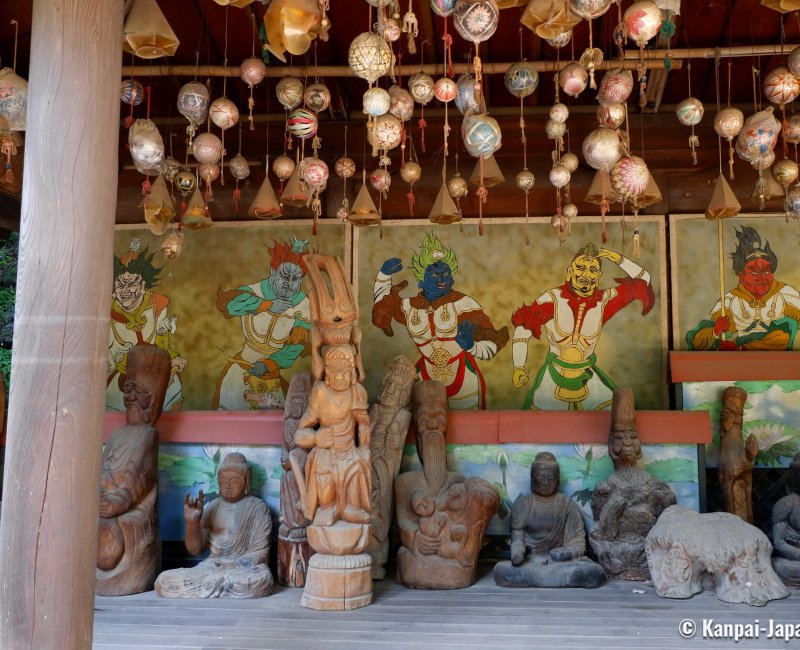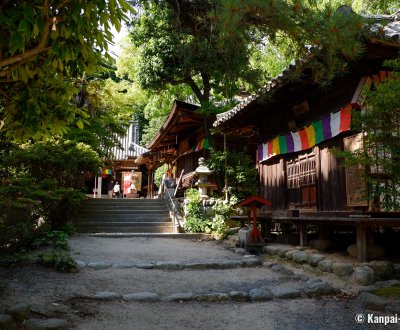Ishite-ji
The Temple of the First Ohenro Pilgrim
Ishite-ji is the 51th temple of the Ohenro pilgrimage on Shikoku Island, located near Dogon Onsen hot springs district in Matsuyama, the capital of Ehime prefecture in Japan. It was founded in the early 8th century by the traveling monk Gyoki, and later became a temple dedicated to the legend of the 1rst 88 temples route pilgrim.
Ishite-ji is located about 20 minutes’ walk from Dogo Onsen ♨️ hot springs district, in the north-east of the center of Matsuyama city, the capital of Ehime prefecture. This Buddhist temple is the 51th stop on 88 of the Shikoku pilgrimage and worships the Buddha of Medicine Yakushi Nyorai. It was founded in 729 by Gyoki, a traveling monk, under the name of An’yo-ji (安養寺) then became a temple of the Shingon school in 813 after Kukai (Kobo Daishi) stayed here for his training.
The legend Emon Saburo
The temple was renamed Ishite-ji in 892 in reference to the story of Emon Saburo. A very wealthy man from a prominent family of Matsuyama, he was also known as cruel and unholy. When a traveling monk visited him to ask alms, he drove him out 8 times and even broke his alms bowl, so much sot that the religious man never came back.
After this event, tragedy struck Emon Saburo as his 8 children passed away one after the other. He then understood that the mendicant was in fact Kukai and realizing his mistake, he desperately roamed the roads of Shikoku looking for him for several years.
Thus, Emon Saburo walked temple to temple on the Shikoku pilgrimage route more than 20 times to no avail as he never found the master. Finally, as he walked back, he collapsed near temple n°12 Shosan-ji (current Tokushima prefecture).
It was then that Kukai appeared, forgave him and collected his last will: Saburo wished to be reborn in the powerful Kawano family of Matsuyama to make himself useful to the population. Kukai wrote the characters 衛門三郎再来 (Emon Saburo sairai, "reincarnation of Emon Saburo") on a stone he placed in the left hand of the man as he took his last breath.
The next year, a boy was born in the Iyo province, his left hand so firmly clenched that a priest of the An’yo-ji temple was called. He succeeded in making the baby open its hand and discovered a stone inscribed with Emon Saburo’s name. When he became an adult, the child used his wealth to restore the temple that would become Ishite-ji (the "stone hand temple"), where the stone is said to still be kept nowadays.
Emon Saburo thus became the archetypal 1rst pilgrim and his story encourages the practice of settai (donation of food to pilgrims by the population) and generosity towards the temples of the trail.

A large grounds in the forest
In his golden years between the 8th and the 16th century, Ishite-ji was a large religious complex. Most of its buildings were burnt in 1566 during the civil wars of the Sengoku era, and only the main hall Hondo, the Niomon gate and the 3-stories pagoda were spared. Its reconstructed pavilions spread over about 60 hectares, protected by tall trees providing a pleasant shade and coolness.
The grounds is always open and may surprise visitors used to Japanese Buddhist temples that are strictly maintained due to its colorful and heteroclit look, and its abundant vegetation. The numerous statues on display, of every styles and periods, representations of Buddhas or of the 7 Lucky Gods are a great part of this temple’s charm.
Ishite-ji is lively with the local population who visits frequently its adjoining cemetery and to pray for fertility and easy childbirth, as well as by tourists thanks to it being close to Dogo Onsen. Naturally, white-clad pilgrims still walk the holy trail.

Historical and spiritual wealth
There is almost no end to exploring this lively place, and one can discover for example:
- Niomon, a 7-meters high gate, built in 1318 and designated National Treasure. It is adorned with giant straw sandals on which pilgrims insert ¥1 coins;
- Mantora Dokutsu (マントラ洞窟), a 200 meters long underground gallery. It opens on an inner temple hidden further into the mountain and characterized by its original golden dome;
- Treasure Hall, that showcases Buddhist statues and important scriptures dating back to the temple’s founding by Gyoki.
The 2 pagodas, one 3-stories and one 5-stories, date back to the end of the Kamakura period and are designated Important Cultural Properties. In the east of the enclosure, a tall statue of Kobo Daishi standing on the top of a hill rises above the canopy.
The local specialty is yakimochi, a roasted rice cake that looks like a stone, and that used to be offered to the pilgrims. The tour of the 88 temples can be completed with Taisan-ji (n°52) and Enmyo-ji (n°53), both located in the north-west of Matsuyama.

